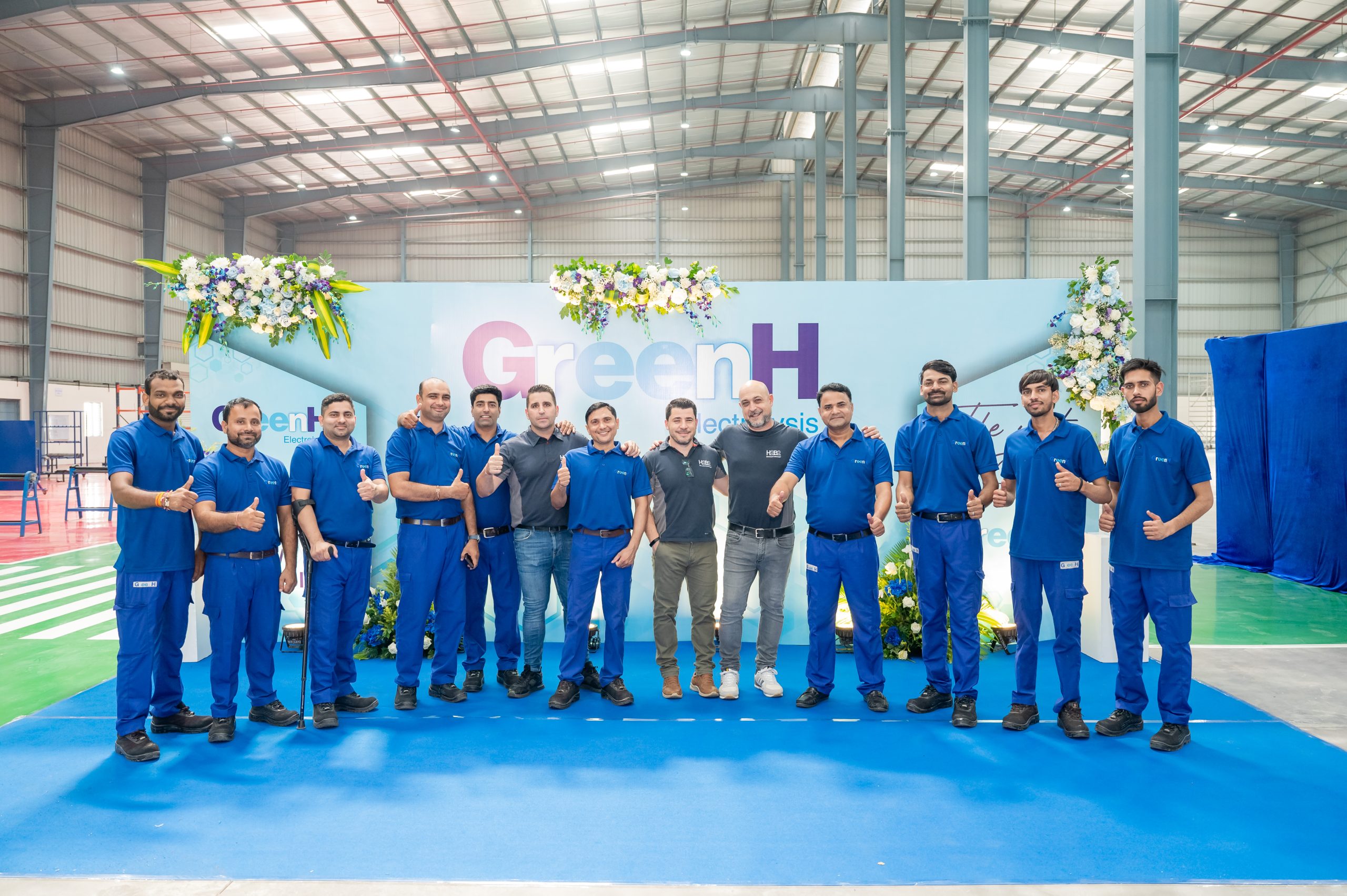
Hydrogen and the Skilled Workforce
India is in the midst of a clean energy revolution. With the launch of the National Green Hydrogen Mission (NGHM) in January 2023, the government has committed to producing 5 million metric tonnes (MMT) of green hydrogen annually by 2030, supported by an additional 125 GW of renewable capacity and over ₹8 lakh crore in investments.
(Source: MNRE Mission Document)
The rationale is clear: India must reduce fossil fuel imports, decarbonize hard-to-abate sectors like steel and cement, and position itself as a global hydrogen export hub. This aligns with India’s net-zero 2070 goal and its pledge to source 50% of its electricity from renewables by 2030.
But capital and infrastructure alone will not secure this transition. Human capital is the real enabler. Skilled professionals—engineers, technicians, safety experts, project managers—will be needed to design, build, and operate the hydrogen economy. Without them, India risks creating stranded assets and missing its export ambitions.
A study by the Council on Energy, Environment and Water (CEEW) estimates that India will require over 2 million skilled workers by 2030 to achieve its green hydrogen goals.
(Source: CEEW – Building a Green Hydrogen Workforce)
Mapping the Skills in the Indian Landscape: Where Are the Gaps?
Hydrogen is unlike solar or wind, where skill requirements are concentrated in installation and O&M. The hydrogen value chain is far broader, spanning R&D, manufacturing, logistics, industrial integration, and safety protocols.
Current Gaps in Skilling Ecosystem
These gaps can be understood across several critical domains. Here are the current gaps in the skilling ecosystem present in India
- Electrolyser assembly and maintenance: Most electrolysers are imported, and although some local assembly is carried out, there is a clear shortage of technical expertise within the workforce. Limited know-how in handling critical components, ensuring correct calibration, and applying advanced techniques for repair and efficiency optimization has created a significant gap. This lack of specialized skills not only affects the reliability and performance of electrolysers but also increases dependency on foreign suppliers for troubleshooting, spare parts, and technical support.
- Hydrogen storage and handling: Hydrogen storage and handling require highly specialized knowledge, as hydrogen behaves differently from conventional fuels. Training is needed for three major areas: pressurized systems, cryogenic tanks, ammonia-based carriers and methanol-based carriers. Pressurized systems demand expertise in material strength, leak-proof sealing, and high-pressure monitoring; cryogenic tanks require knowledge of insulation technologies, boil-off gas management, and extreme low-temperature safety procedures; and both ammonia-based & methanol-based carriers necessitate training for toxicity, corrosion risks, and chemical handling standards. High operating pressures further underscore the need for awareness of safety measures and strict adherence to the same during operations. At present, only a limited number of professionals are equipped with such cross-disciplinary skills, leaving a gap in ensuring safe, efficient, and large-scale hydrogen storage solutions and logistics across industries.
- Fuel cell integration: Fuel cells are emerging as a critical component for decarbonizing transportation and stationary power, yet very few engineers and operating technicians in India are trained in their integration and lifecycle management. Fuel-cell systems involve not only the core stack but also peripheral subsystems such as cooling, air supply, hydrogen delivery, and power electronics. The current workforce has little exposure to these multi-disciplinary requirements, and training programs for fuel-cell installation, diagnostics, and maintenance are almost non-existent. This gap slows down the pace of fuel-cell adoption in buses, trucks, two-wheelers, and backup power systems, as industries continue to depend on foreign expertise for deployment and after-sales service.
- Health, Safety & Environment (HSE) standards: Hydrogen’s unique physical and chemical properties such as its high diffusivity, wide flammability range, and invisible flame require safety protocols that go beyond conventional oil and gas practices. However, the current workforce largely relies on outdated safety frameworks and lacks specialized training in hydrogen-specific hazard identification, leak detection, emergency response, and firefighting measures. The absence of standardized training modules and certification in hydrogen safety leaves industries vulnerable to accidents, public mistrust, and regulatory non-compliance. Bridging this gap is critical to building public and investor confidence in hydrogen as a safe and scalable clean energy solution.
Currently, PMKVY (Pradhan Mantri Kaushal Vikas Yojana) and Skill India do not cover hydrogen-specific modules. A handful of institutions, such as IIT Madras (which has a Centre for Hydrogen and Fuel Cell Technology), TERI School of Advanced Studies, and NTPC’s training arms, have begun running hydrogen-related programs, but coverage is far below the required scale.
(Source: Skill Council for Green Jobs – Skill Gap Reports)
If these gaps remain unaddressed, India could face a situation where hydrogen plants and infrastructure are built, but the shortage of trained professionals prevents them from being operated, maintained, and optimized effectively.
With the gaps identified, the next logical question is: where exactly will the demand for these new skills arise? We would now address these questions with seven curated infographics.
Demand-Side Dynamics: Where Will the Jobs Come From?
India’s hydrogen employment boom will be shaped by geography and sectoral demand.
Regional Hotspots

Sectors Driving Jobs

What Skills Need to Be Developed?
To address the skills gap, India must adopt a layered skilling framework that emphasizes both disciplinary depth (specialized domains of expertise) and proficiency levels (from entry-level technicians to advanced researchers). This framework must ensure a steady pipeline of talent across the hydrogen economy while embedding safety, sustainability, and international competitiveness into the workforce.


This approach ensures that India develops not only a workforce but also a comprehensive talent ecosystem ranging from research labs to on-ground operations.
Building the Talent Pipeline: Policy and Institutional Interventions
There are some already existing government and private initiatives to push this endeavour in India.

(Source: pv magazine India); (Source: ETEnergyWorld); (Source: Energetica India); (Source: PIB Release); (Source: Wikipedia – Avaada Group)
Global Benchmarks and Collaborations
India can accelerate learning by adopting best practices from international hydrogen strategies.

(Source: BMWK – National Hydrogen Strategy); (Source: IEA – Global Hydrogen Review 2023)
By leveraging these partnerships, India can shortcut the learning curve and rapidly scale up its skilling frameworks.
A Human-Centric Energy Transition
The hydrogen economy is often measured in tonnes of hydrogen produced, gigawatts of renewable energy capacity added, and billions of rupees invested. Yet its true foundation is the people who will make it work. Without skilled researchers, engineers, operators, and technicians, India’s ambitious hydrogen targets cannot be realized.
India faces a 600,000–2 million worker gap that must be closed by 2030. If left unaddressed, this shortfall could undermine industrial decarbonization, slow down export readiness, and leave costly infrastructure underutilized.
What India Needs to Do Next: Building a Hydrogen Workforce

(Source: PIB Release); (Source: pv magazine India); (Source: ETEnergyWorld); (Source: Avaada Group – SCGJ MoU); (Source: Green Hydrogen Skilling Report); (Source: ETEnergyWorld); (Source: ETEnergyWorld); (Source: Avaada Group – SCGJ MoU)
The Journey Ahead
By 2030, India’s hydrogen success will not be judged only by the renewable capacity installed or the volume of hydrogen produced, but by the strength of the workforce that sustains it. From scientists developing advanced electrolysers to technicians ensuring safe operations at refueling stations, people will determine the outcome of India’s hydrogen mission.
Government, industry, academia, and private players must co-invest in workforce development through Centres of Excellence, certification frameworks, and lifelong learning platforms. Closing the skilling gap will not only allow India to meet its domestic targets but also enable it to emerge as a global hydrogen leader.
Hydrogen is India’s energy future, but people are the fuel that will power it.
